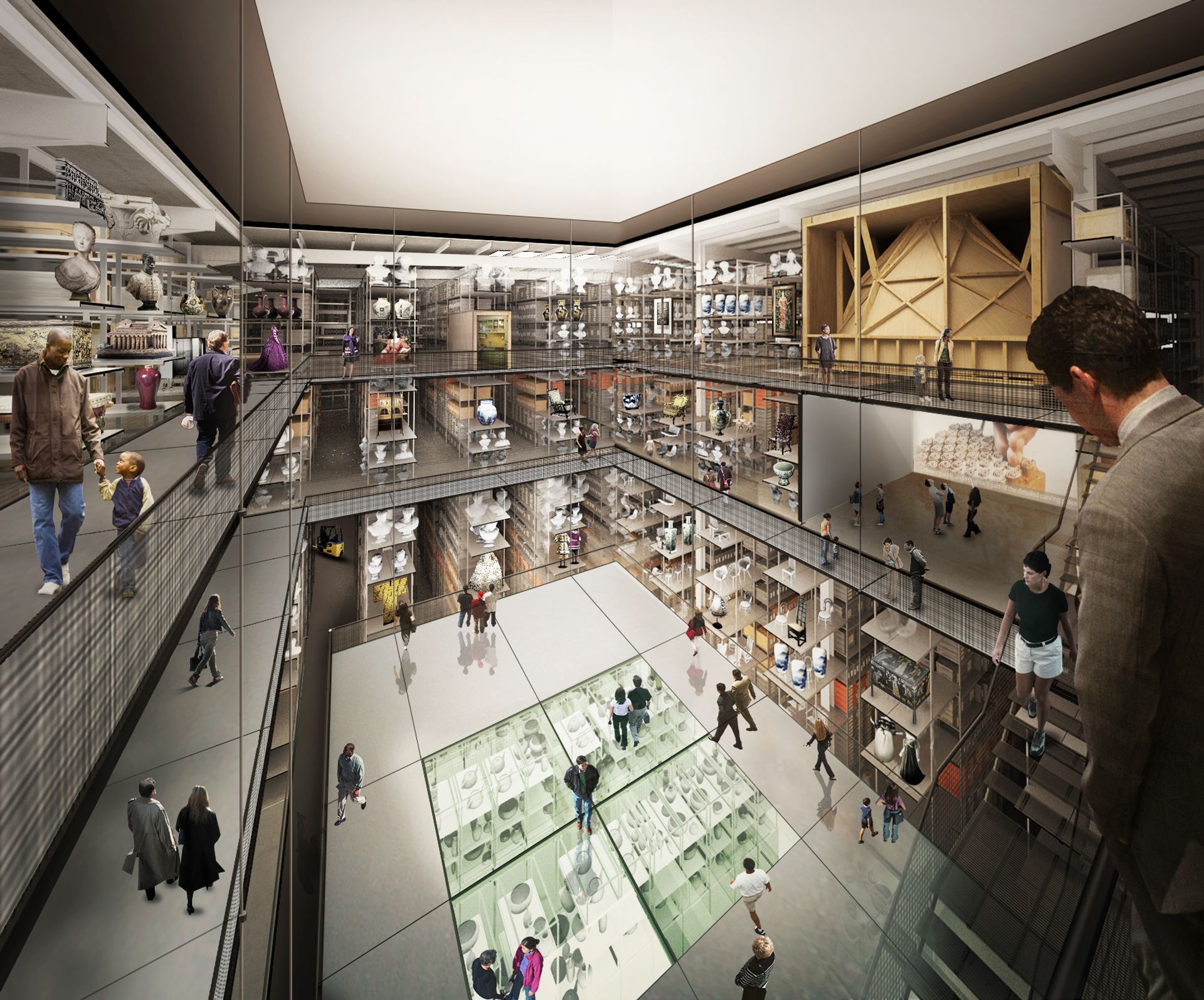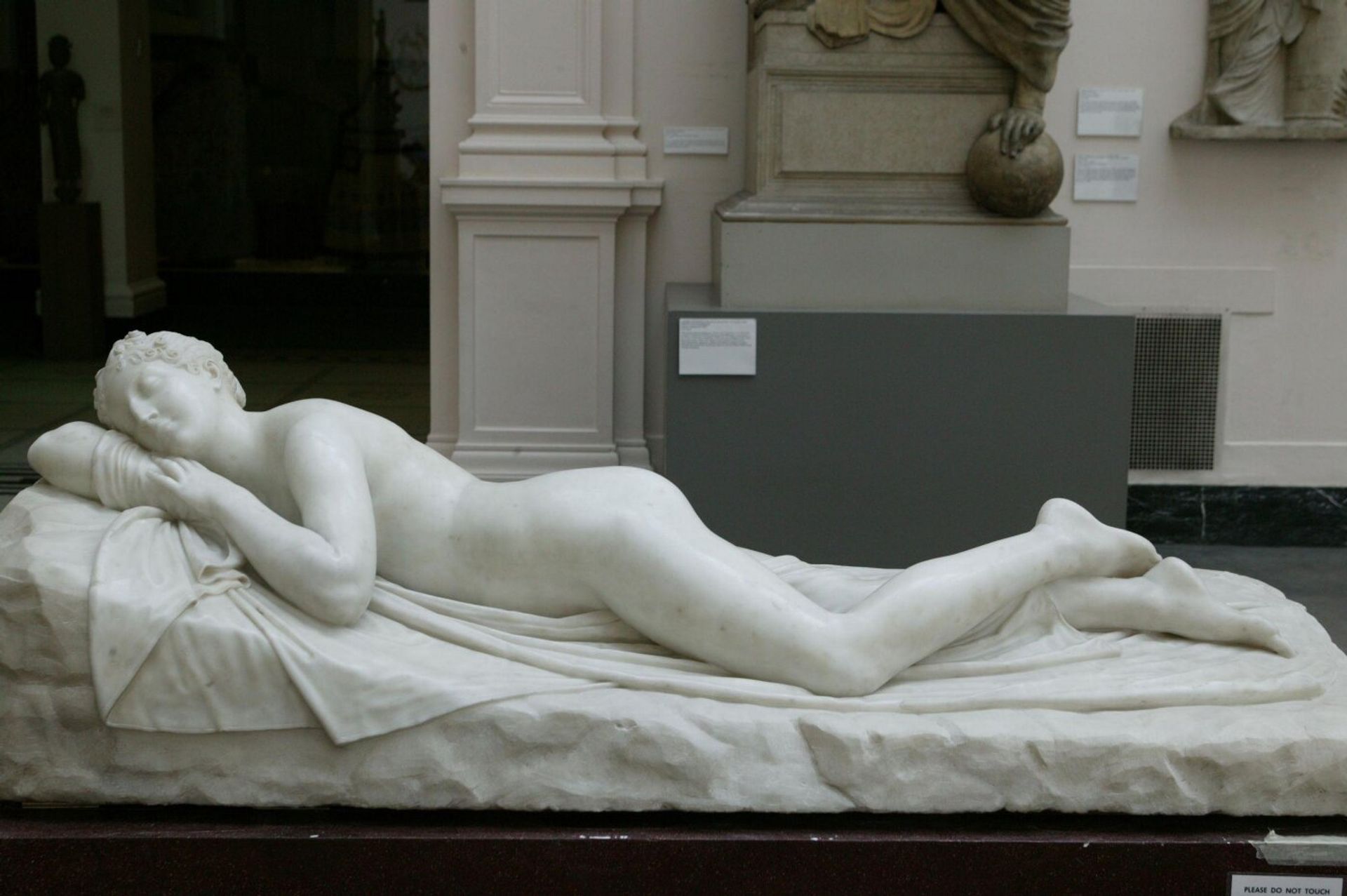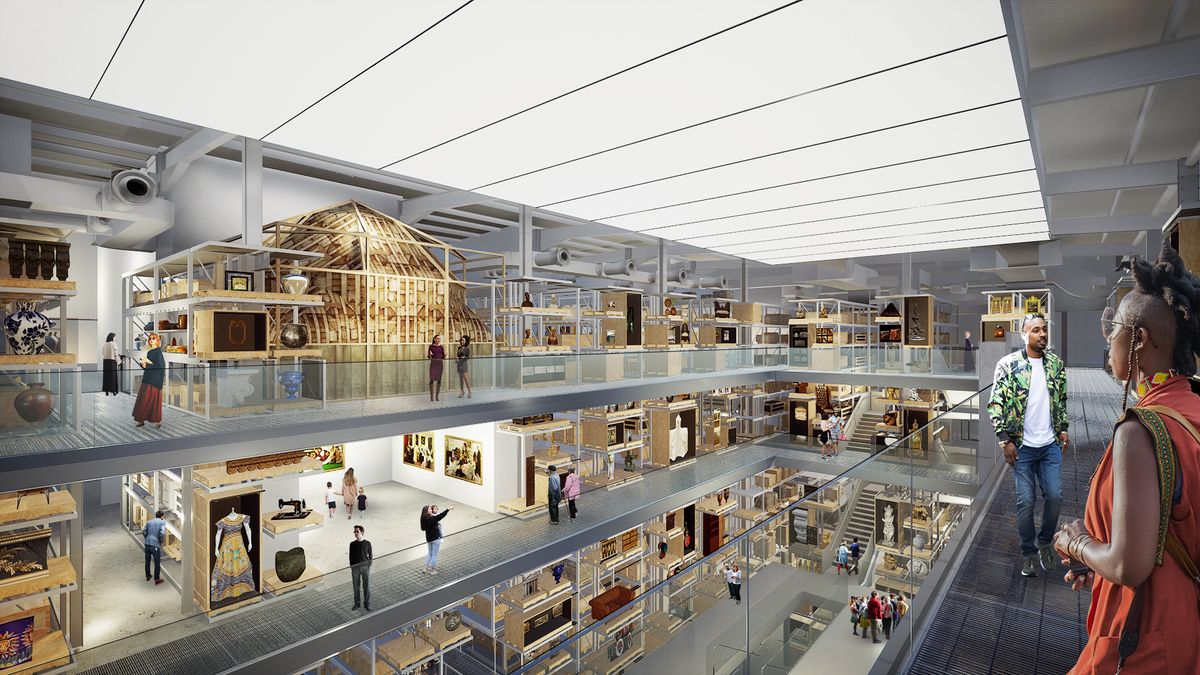The Victoria and Albert Museum’s (V&A) new open-access storage building in east London has just been completed, providing a home for over 250,000 objects. In a few days the process of transferring the collection will begin in what a museum spokesperson describes as “the UK’s biggest house move”.
The V&A East Storehouse is due to open to visitors in spring 2025, at the same time as the nearby V&A East Museum. Together the twin projects on the former 2012 Olympic site will represent the largest UK museum development scheme for decades. Total costs will exceed those of the British Museum’s Great Court £100m project in 2000.

Internal render view of V&A East Storehouse, designed by Diller Scofidio + Renfro © Diller Scofidio + Renfro, 2018
The Art Newspaper has just been given an exclusive tour of the V&A Storehouse by the museum’s deputy director Tim Reeve, who is overseeing the project. Set beside the River Lea, the interior of the former Olympic media centre has been entirely gutted, creating a cavernous central hall and four huge floors of storage shelves and racking systems. It is designed by New York-based architects Diller Scofidio + Renfro.
The central hall and its surrounding walkways will be the main public route, from which many thousands of objects will be visible on metal shelving. Reeve points out that nearly all museums which allow public access to their stores do so behind glass or on guided tours, but the V&A is taking the unusual step of allowing visitors to get close to the collection—an open interior with objects and people sharing the same environmentally controlled spaces.
He describes the idea as “a dramatic, self-guided visitor experience, which transforms access, maximises transparency and removes barriers to the creative riches within the world’s leading collection of art, design and performance”.
Along with over 100 changing displays (mostly fairly small), there will be five spectacular objects on permanent show which are being built into the structure of the new interior. These are: the Torrijos Ceiling from the Altamira Palace in Spain (around 1490), the Agra Colonnade from India (1637), a Frankfurt Kitchen by the Austrian designer Margarete Schütte-Lihotzky (1926), the Kauffman Office by the American architect Frank Lloyd Wright (1937) and a section of the exterior facade of the demolished Robin Hood Gardens council estate in Poplar, east London (1972). These items are too large to easily display in the V&A’s main South Kensington museum.

Antonio Canova's Sleeping Nymph (1820-1824) Courtesy Victoria and Albert Museum
Among other objects on display in the V&A East Storehouse will be Antonio Canova’s sensual marble sculpture Sleeping Nymph, completed in 1824 by his studio, two years after his death. Stored objects will also be available for detailed research in study rooms, such as in the Clothworkers’ Centre for textiles and fashion.
The V&A East Storehouse was originally due to have opened this year, but the two-year delay is due partly to Covid-19 and to the recent acquisition of the large archive and collection of the musician David Bowie. This was acquired in February with £10m from the the Blavatnik Family Foundation (set up by Leonard Blavatnik, Ukrainian-born and now with American-British joint citizenship) and Warner Music Group.
From 2025 Reeve expects to get 250,000 visitors a year at the V&A East Storehouse and 1m at the V&A East Museum, ten minutes’ walk away. Under the directorship of Gus Casely-Hayford, the two venues are putting an emphasis on attracting a younger and more diverse audience than at the more traditional museum in South Kensington.
For the V&A Storehouse, the UK’s Department for Digital, Culture, Media and Sport (DCMS) has given a grant of £50m to fund the move from its existing store at Blythe House, in west London, which is now being sold by the government.
The £50m will cover most of the costs of building V&A East Storehouse and moving the collection, although a museum spokesperson says that “some extra money will come from the V&A’s own fundraising”. The building is owned by the Delancey Group and is leased to the V&A on a long-term commercial basis.
DCMS has also undertaken to increase the V&A’s annual grant-in-aid by £9m a year, to help cover the additional running costs of both the V&A East Storehouse and V&A East Museum.
Meanwhile the British Museum is nearing completion of its own new storage facility, to replace its existing space at Blythe House. Now under construction at Shinfield, in Berkshire, it will be known as BM_ARC (British Museum Archaeological Research Collection). Costed at an estimated £64m, it was originally scheduled to be completed this year, but it has been delayed and may open next year or in 2025.


